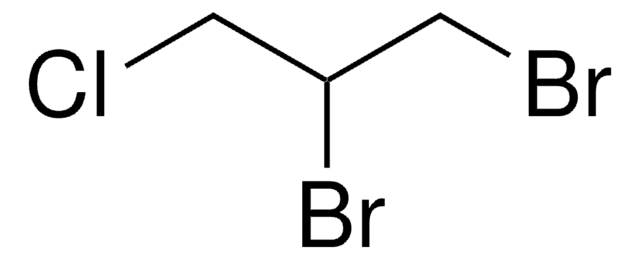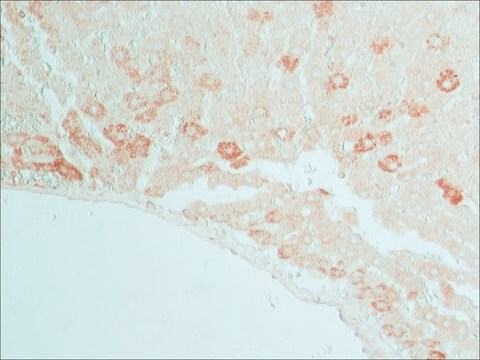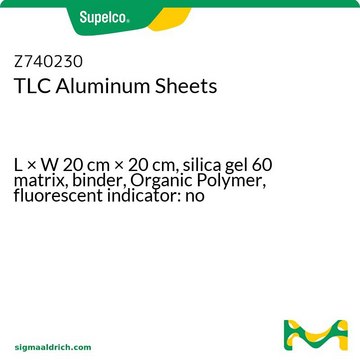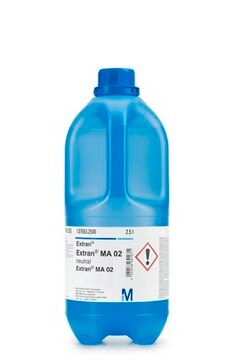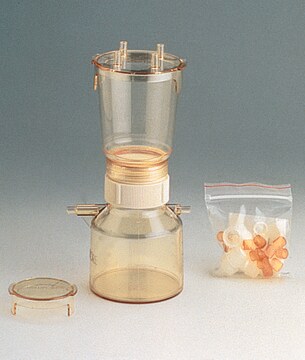31257
1,2-Dibromo-3-chloropropane
PESTANAL®, analytical standard
Synonym(s):
DBCP
About This Item
Recommended Products
grade
analytical standard
product line
PESTANAL®
shelf life
limited shelf life, expiry date on the label
technique(s)
HPLC: suitable
gas chromatography (GC): suitable
refractive index
n/D 1.5542
bp
60-65 °C/7.5 mmHg
density
2.081 g/mL at 25 °C
application(s)
cleaning products
cosmetics
environmental
food and beverages
personal care
format
neat
SMILES string
ClCC(Br)CBr
InChI
1S/C3H5Br2Cl/c4-1-3(5)2-6/h3H,1-2H2
InChI key
WBEJYOJJBDISQU-UHFFFAOYSA-N
Looking for similar products? Visit Product Comparison Guide
General description
Application
Caution
Legal Information
Signal Word
Danger
Hazard Statements
Precautionary Statements
Hazard Classifications
Acute Tox. 3 Oral - Aquatic Chronic 3 - Carc. 1B - Muta. 1B - Repr. 1A - STOT RE 2 Oral
Target Organs
Testes
Storage Class Code
6.1C - Combustible acute toxic Cat.3 / toxic compounds or compounds which causing chronic effects
WGK
WGK 3
Flash Point(F)
170.1 °F
Flash Point(C)
76.7 °C
Personal Protective Equipment
Choose from one of the most recent versions:
Certificates of Analysis (COA)
Don't see the Right Version?
If you require a particular version, you can look up a specific certificate by the Lot or Batch number.
Already Own This Product?
Find documentation for the products that you have recently purchased in the Document Library.
Protocols
US EPA Method 8260 describes the analysis of volatile organic compounds in solid wastes and ground waters. This application illustrates the analysis of many compounds commonly analyzed by this method using purge and trap coupled to GC-MS.
Our team of scientists has experience in all areas of research including Life Science, Material Science, Chemical Synthesis, Chromatography, Analytical and many others.
Contact Technical Service

